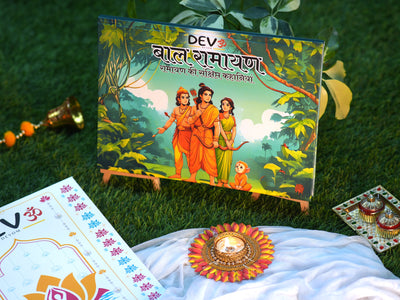Hindu Symbols and Their Meanings for Kids
Share

Hinduism, with its rich tapestry of history and culture, offers a myriad of symbols, each carrying profound meanings. Ideal for educational purposes, these symbols not only add to the aesthetic appeal but also enrich young minds about cultural heritage. This article explores some of the most iconic Hindu symbols and their meanings, ensuring that the explanations are kid-friendly and easy to understand.
Understanding Hindu Symbols
Hindu symbols are a vital part of cultural expressions that convey philosophical, spiritual, and cultural truths in visually appealing formats that attract both adults and children alike. These symbols serve as tools to impart wisdom, narrate historical events, and unfold the spiritual truths of Hinduism.
The Lotus Flower: Symbol of Purity and Enlightenment
Perhaps no other symbol in Hinduism is as evocative as the lotus flower. Growing in muddy water yet blossoming above the surface pristine and bright, the lotus represents spiritual awakening and purity of heart. For kids, the lotus teaches the valuable lesson that no matter where you come from, you have the potential to rise above your circumstances and shine.
The Om: Sound of the Universe
The 'Om' or 'Aum' symbol is one of the most recognized spiritual icons worldwide. It represents the primordial sound from which all other sounds and creations emerge. When introduced to children, it can be likened to the origin of their favorite songs or sounds, helping them understand that just as tunes have a beginning, the universe does too.
Swastika: A Symbol of Good Fortune
Despite its misappropriation in recent history, the original meaning of the Swastika in Hinduism is one of prosperity and good fortune. It is a common sight in Hindu homes, often drawn during religious ceremonies to bless the surroundings with positive energy. For children, understanding the Swastika’s true meaning is crucial to appreciating cultural diversity and history.
Trishula: The Trident of Lord Shiva
The Trishula or trident is the weapon of Lord Shiva and symbolizes the control of the mind, body, and spirit. It also represents Shiva's role as the destroyer of evil and ignorance. Introducing kids to the concept of the Trishula can be a way to discuss the importance of overcoming obstacles and maintaining balance in life.
The Conch Shell: A Call to Righteousness
The sound of the conch shell is iconic in Hindu rituals. It symbolizes the victory of good over evil and is used to call the faithful to prayer and religious duties. For children, the conch shell can symbolize the importance of responding to the call of duty and the pursuit of righteousness.
The Tilak: A Mark of Sanctity and Respect
Often seen on the forehead during religious ceremonies, the Tilak is a mark of sanctity. It is applied at the Ajna Chakra, the space between the eyebrows, which is considered the seat of wisdom and consciousness. For kids, understanding the Tilak helps them appreciate the values of respect and reverence in Hindu culture.
Conclusion
Hindu symbols offer more than just visual appeal; they are a gateway to understanding the rich philosophical underpinnings of one of the world's oldest religions. Teaching kids about these symbols can provide them with a deeper appreciation of cultural diversity and the values that have sustained Hindu philosophy through.
FAQs
What do Hindu symbols teach children? Hindu symbols are not just decorative; they embody deep philosophical and ethical teachings. They teach children about spirituality, ethics, and the importance of living a life aligned with cosmic principles.
Why is the lotus flower important? The lotus flower is important because it stands for purity and spiritual growth. It teaches kids that beauty and purity can emerge even from difficult conditions.
Can kids use these symbols? Absolutely! Hindu symbols are educational tools and can be used to teach children about the richness of Hindu philosophy and cultural practices.
Are these symbols related to Hindu stories? Yes, many Hindu symbols are directly tied to myths and stories from Hindu scriptures like the Ramayana and Mahabharata. These stories are rich with lessons and morals that are still relevant today.
How can learning about these symbols help children? Learning about Hindu symbols can help children develop a deeper understanding of and respect for cultural diversity. It also aids in the development of moral and philosophical thinking.

![Combo Set of 4 Books and 2 Card Sets for Kids [Alphabets Based on Hinduism, Ank Alok, NavDurga, MahaDev Books and God and Goddess Mantra Cards, Geeta Gyan Cards]](http://devomkids.com/cdn/shop/files/DSC08534_400x.jpg?v=1736949346)

